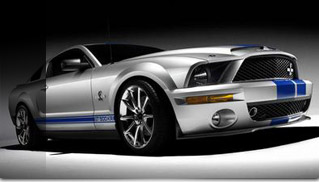 A muscle car holds a particular attraction for car lovers. There is an appreciation of the engineering feat behind the building of a muscle car but also of the image of vehicles that originated in the demand for speed and power, fuelled by the emergence of both stock car racing and drag racing as popular pastimes.
A muscle car holds a particular attraction for car lovers. There is an appreciation of the engineering feat behind the building of a muscle car but also of the image of vehicles that originated in the demand for speed and power, fuelled by the emergence of both stock car racing and drag racing as popular pastimes.
Muscle cars would have been associated by some people with hot rods – old, classic cars modified and fitted with larger engines by dedicated enthusiasts. However, the muscle car segment has been one dominated by the car manufacturers themselves and they take the market very seriously indeed. The Oldsmobile Rocket 88 is often labelled the first muscle car and came equipped with the first high-compression overhead valve (V8) to be used in the US, in place of the smaller and less weighty Oldsmobile 76/Chevy body employed for use in six-cylinder engines. That same sense of innovation has informed the muscle car scene in the decades since then, but in more recent times the technology behind the muscle car has become even more high tech.
Another golden age of American high performance has been ushered in with a range of remarkable modern muscle cars. These machines combine the speed and power of their hallowed traditional ancestors but add in new elements of safety, handling, reliability, and even fuel economy. A good example of the modern muscle car is Ford’s redesigned Mustang from 2005, said by some to be Ford’s best ever pony car and a model that made the type of muscle associated with cars from the 1960s affordable once more. The Mustang GT had the capability to reach 0-60 miles per hour in a little over five seconds, meaning it could out race all but the most high performing of classic Mustang models, yet it came at an infinitely more affordable price in relative terms and had the type of safety standards and fuel efficiency that the older models could never reach.
A key element of muscle car performance is the torque because at torque peak is where the car accelerates the quickest in any one gear. Getting the torque right is essential so manufacturers need to use the latest technology, such as that available from Transducer Techniques. This helps achieve maximum performance on the road. The technology being used to manufacture load cells, torque sensors and similar equipment demonstrates just how precise and accurate the measurement of parts has become within the muscle car manufacturing process.
The emphasis on safety and fuel efficiency in the newer generation of muscle cars, combined with the continued emphasis on speed and power, bodes well for this particular market segment. The baby boomer generation appears to have found a new love for classic muscle car models and it is to be hoped that their enthusiasm rubs off on the younger generations who will then turn to newer and updated models, while continuing to appreciate the history of the muscle car.